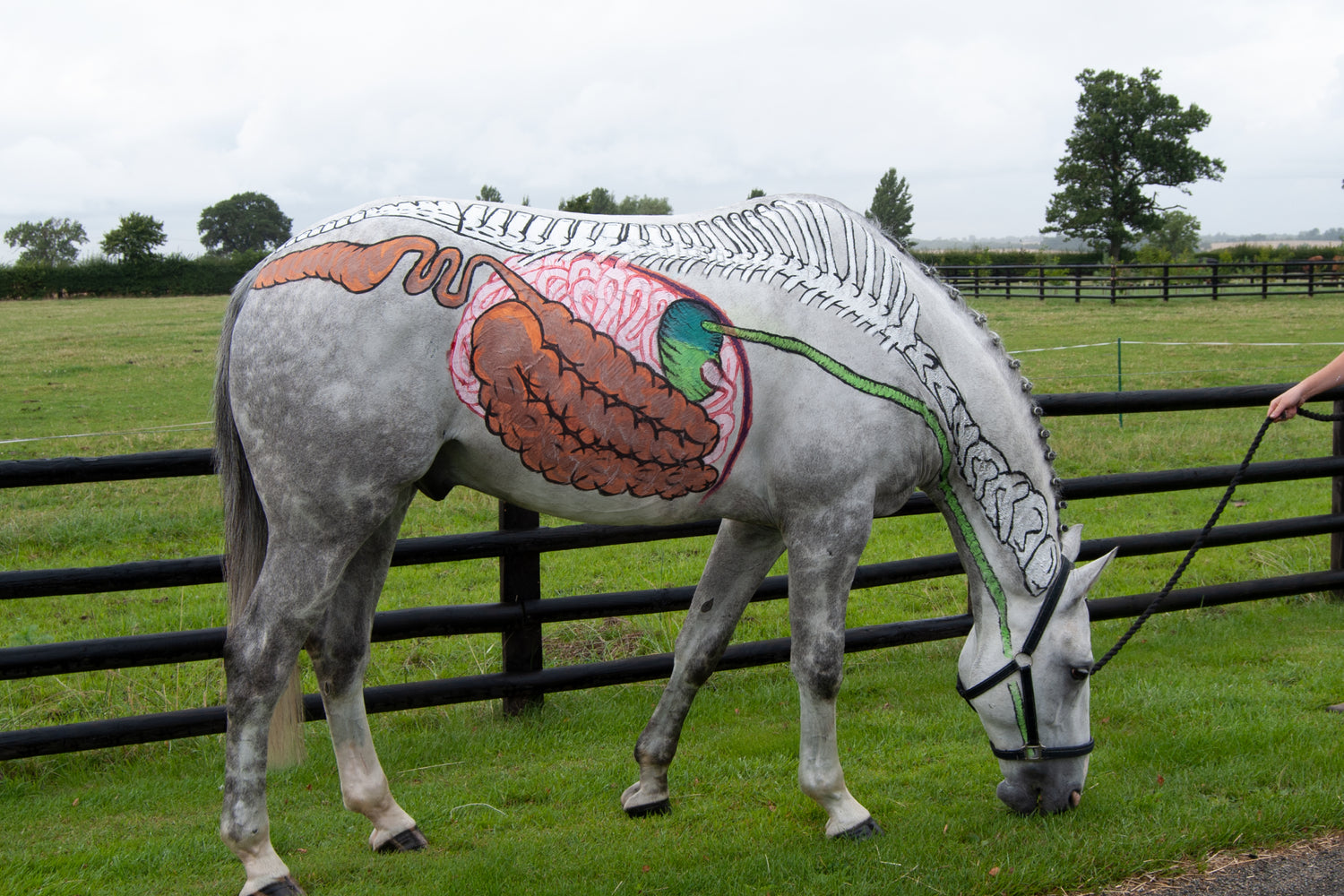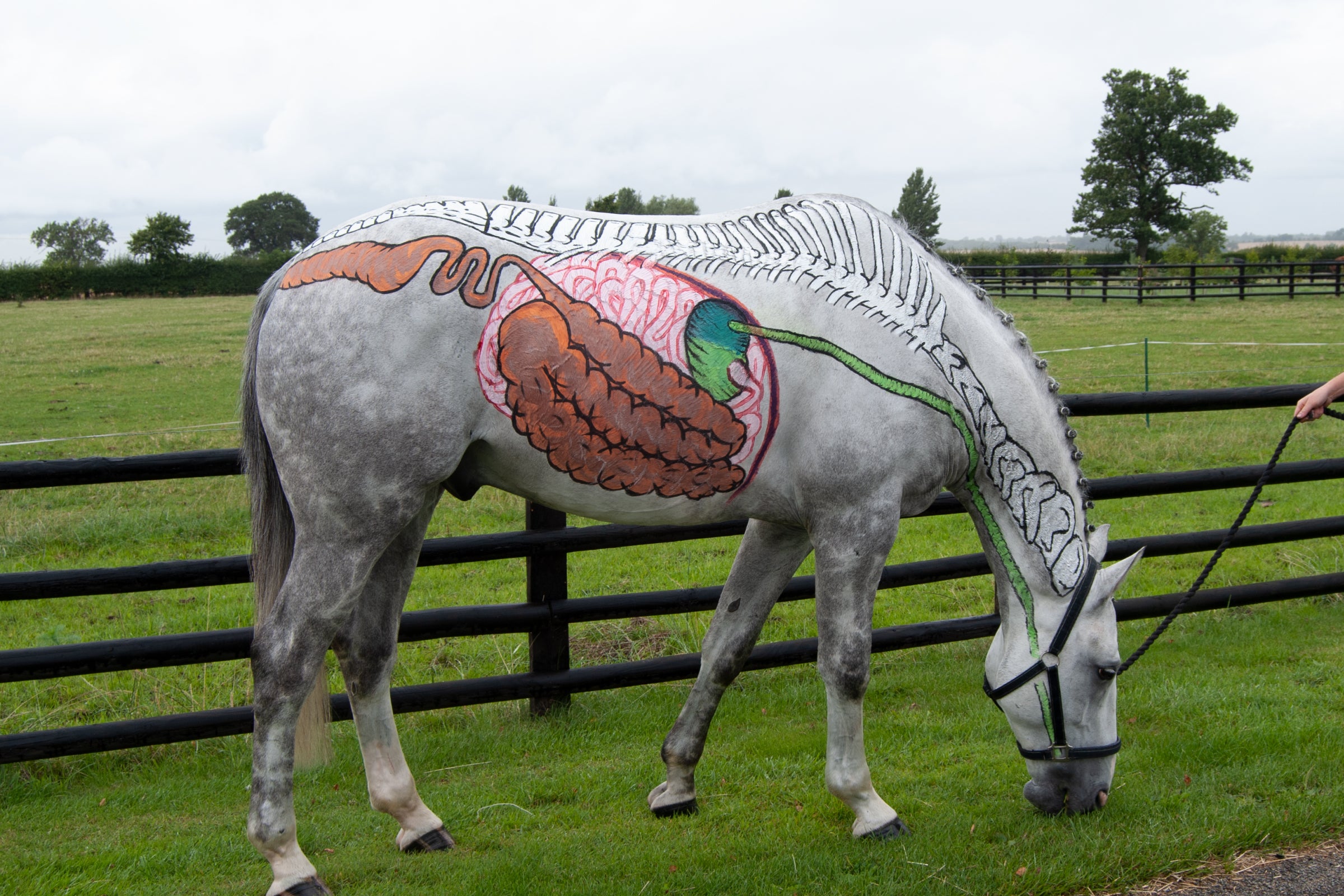THE HINDGUT MICROBIOME OF YOUR HORSE IS SUPER SENSITIVE TO CHANGES. IT IS ESSENTIALLY FULL OF BENEFICIAL MICRO-ORGANISMS ACTING SYNERGISTICALLY TO FERMENT FIBRE.
Grass at a basic level contains sugars and structural fibre (indigestible cellulose and lignin). The hindgut microbiome requires structural fibre to maintain a balance in the fibre fermenting micro-organisms.
Sugars are produced in the leaves of plants during daylight. The sunnier the day, the more rapid the photosynthesis and the more sugars manufactured. The first growth of grass in spring has very high levels of sugars and low levels of structural fibre therefore horses tend to eat more and the total intake of sugars will be high due to the volume of forage consumed. This can lead to imbalances between the different species of bacteria, which can then upset the microbial environment in the hindgut and cause an overgrowth of bad bacteria creating a hindgut imbalance.
What can I do to support my horse's hindgut during this time?
- Gradual changes in diet are always recommended therefore be aware of your pasture growth/flushes, (early morning pasture is best as it has the least sugar).
- Supply structural fibre in the form of stalky hay.
- Support the microbial populations with an encapsulated probiotic and prebiotics.
- Remember energy in = energy out, your horse will have more energy during this time.
MAXIA DIGEST contains a balanced combination of prebiotics and an encapsulated probiotic:
Probiotic - (LevucellSC) an encapsulated (protected) live probiotic enabling high numbers of live cells to reach the hindgut and beneficially influence hindgut function.
Prebiotics - MOS (mannanoligosaccharide), FOS (fructooligosaccharides) and BetaGlucans which stimulate the growth of good bacteria including newly introduced strains.



